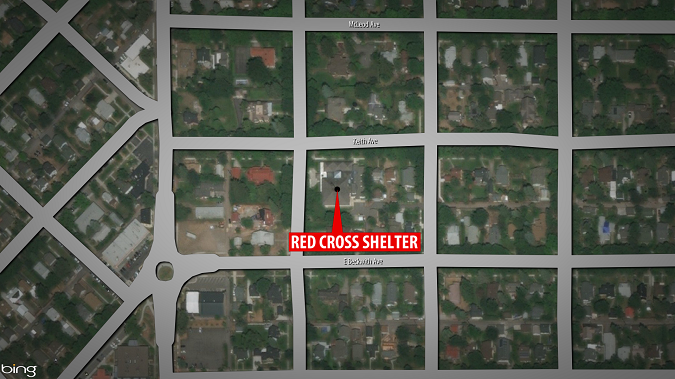MISSOULA – The American Red Cross of Montana’s evacuation shelter to help those in the flooded areas of Missoula opened at 4 p.m.Tuesday.
Volunteers spent the day preparing by getting cots set up and stocking up on food and water at the shelter, located at Christ the King Catholic Church in Missoula at 1400 Gerald Avenue.
At least ten families have called in to the Red Cross asking for help since the flooding began this weekend.
Flooding from the Clark Fork River is occurring at the north end of Tower Drive, Kehrwald Drive and Stone Street in the Orchard Homes neighborhood. More than 20 Missoula County homes are being impacted.
The Red Cross shelter is ADA accessible with an elevator and ADA facilities to accommodate anyone who might need help. Volunteers will be there as long as people need help.
"We offer three meals a day plus snacks and water. And even if you don’t want to evacuate to the shelter, if you need water or snacks or food, please come because we can give you some," said nurse Red Cross volunteer Toni Taylor. "We’d rather they come to a safe place than to stay in their homes where the flood waters may be rising or because of contamination to the groundwater. So this is their option, to come stay with us."
The shelter is located at Christ the King Church at 1400 Gerald Avenue and provides a place to sleep, food, water and showers. It will be open as long as the flooding continues.
The National Weather Service in Missoula has issued a flood warning for the Clark Fork River and the Montana Red Cross is urging residents to be prepared in case flooding does occur.
Follow the steps below to keep your family safe:
BEFORE A FLOOD
- Prepare in advance
- Assemble an emergency preparedness kit, which should include a battery-powered or hand-crank radio, nonperishable food, water, flashlight, first aid kit, emergency blanket, medications and copies of your personal documents.
- Create a household emergency plan and practice as many elements of that plan as possible. This includes identifying responsibilities for each member of your household and how you will work together as a team.
- Stay informed about your community’s risk and response plans.
RIGHT BEFORE A FLOOD
- Listen to local radio, NOAA radio or TV stations for the latest information.
- Be prepared to evacuate quickly and know your routes. Find an emergency shelter.Check your emergency kit and replenish any items in short supply such as medications. If you have time, fill your car’s gas tank, bring outdoor belongings, such as patio furniture, indoors. Turn off propane tanks to reduce the potential for fire. Move your furniture and valuables to higher floors of your home. Turn off utilities if told to do so by authorities to prevent damage to your home. If you shut off your gas, a professional is required to turn it back on. Unplug small appliances to reduce potential damage from power surges that might occur.
- If you have pets or livestock consider a precautionary evacuation of your animals, especially large animals. Where possible, move livestock to higher ground. If using a horse or trailer to evacuate your animals, move sooner rather than later.
- Bring your companion animals indoors and maintain direct control of them. Be sure that your pet emergency kit is ready to go in case of evacuation.
DURING A FLOOD
Staying safe indoors:
- Turn off the power and water mains if instructed to do so by local authorities.
- Boil tap water until water sources have been declared safe.
- Avoid contact with floodwater. It may be contaminated with sewage or contain dangerous insects or animals.
- Continue listening to local area radio, NOAA radio or TV stations for the latest information and updates.
- Don’t use gas or electrical appliances that have been flooded.
- Dispose of any food that contacts flood water.
Staying safe outdoors:
- Don’t walk, swim or drive through floodwater. Just six inches of fast-flowing water can knock you over and two feet will float a car.
- If caught on a flooded road with rapidly rising waters, get out of the car quickly and move to higher ground.
- Don’t walk on riverbanks.
- Don’t allow children to play in or near floodwater.
- Avoid contact with floodwater. It may be contaminated with sewage or contain dangerous insects or animals.
- Stay out of areas subject to flooding such as underpasses, dips, and canyons.
AFTER A FLOOD
- Let friends and family know you’re safe.
- If evacuated, return only when authorities say it is safe to do so.
- Keep children and pets away from hazardous sites and floodwater.
- Know the difference. A flood/flash flood watch means a flood or flash flood is possible. A flood/flash flood warning means flooding or flash flooding is already occurring or will occur soon.


